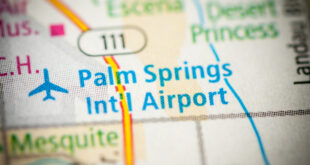A developer wants to put one of the popular establishments on the site for a former drive-thru restaurant on Redlands Boulevard. The planning commission has OK’d the project, but some see the former restaurant as historic and want that building, which still stands, incorporated into the Starbucks design.
If an Orange County developer has its way, a building in Redlands that opened in 1960 as a drive-thru restaurant will be transformed into a Starbucks, one that will also provide drive-thru service.
But its original plan to demolish the building and replace it with a state-of the-art coffeehouse owned and operated by the popular Seattle-based chain isn’t going to happen, according to city officials.
What’s the problem? The city’s sometimes stringent regulations regarding the treatment of its old buildings, among other things.
Because the structure is more than 50 years old, any major changes to it must be approved not only by the city council – which has yet review the project – but also by the seven-member Redlands Historic and Scenic Preservation Commission.
Even though the planning commission in May unanimously approved the demolition proposal after the building had no historical significance, any changes to the structure must also be approved by the historic commission.
The developer, Pacific American Development LLC in Newport Beach, is convinced the site is ideal for a Starbucks, for several reasons. It’s near downtown Redlands, is close to several profitable fast-food restaurants, including a Kentucky Fried Chicken and a McDonald’s and it’s on one of the city’s busiest thoroughfares.
“We’re doing everything we can to make this project happen, within the city’s codes and also considering what Starbucks wants,” said Robert Ziprick, a Redlands attorney whose specialties include real estate transactions. “Figuring out how to make it work is the big issue, and that’s what we’re working on.”
The building at 625 E. Redlands Blvd. was a Baker’s for about three years, reportedly the first Baker’s drive-thru in the city. After the San Bernardino-based chain closed that restaurant and relocated within the city, the building underwent nearly two decades of tenants, going from one restaurant to another and back again.
In 1981 it became La Rosita Mexican Food, also a drive-thru, and was enlarged several times during the early 1980s. It remained La Rosita until its owners retired and closed the restaurant earlier this year.
Meanwhile, Pacific American, which bought the La Rosita property in June for $700,000, has changed its proposal: rather than level the building, it now wants to cut the building back to its original 750 square feet, refurbish that and add a contemporary structure that will include a brick facade.
The new plans also call for the La Rosita sign to remain on the property and advertise Starbucks while keeping its original look, a concession made to some in the city who view the sign as iconic.
“Starbucks is OK with keeping the look of the original structure, as much as that can be done,” Ziprick said. “The question is figuring out how to do that.”
Also, parking and landscaping would be improved and the original part of the building would be made more handicapped accessible. When finished, the restored establishment would cover approximately 1,380 square feet, said Bernard Weiner, president of Pacific American.
“Starbucks is trying to be the perfect tenant,” Weiner said. “They want very badly to locate on this site, and they’re trying to give Redlands whatever it wants. We’re going to leave the original building there and cobble together the rest of it.”
Weiner admits he’s baffled that the city hasn’t been more accommodating to the proposed Starbucks on Redlands Boulevard, which would be the city’s fifth Starbucks and its second with a drive-thru.
The restaurant, he said, will create about 30 jobs, with employees who work more than 20 hours receiving medical benefits. Also, the facility will gross approximately $2 million a year, with Redlands receiving one percent of that in sales tax revenue.
“I’ve done this all over the country since 1988, and I’ve never experienced this kind of resistance on any project,” said Weiner, who called Starbucks one of the most coveted retail tenants in the United States.
“I’ve never had a problem with a historic building,” Weiner continued. “Redlands is a great town, but this is very unusual, especially after you’ve gotten a 7-0 vote from the planning commission.”
Redlands has a history of favoring slow growth. As far back as 1978, the city passed an ordinance that limited to 450 the number of residences that could be built there every year, a measure that was eventually amended to exclude apartments.
Some slow-growth measures have appeared on the city ballot since then, and more recently some residents have waged a seven-year fight to keep a Walmart Supercenter from being built in the city, a battle that is ongoing.
But none of that has anything to do with the Starbucks proposed for the 600 block of East Redlands Boulevard, according to one city official.
In that case, Redlands is following the guidelines of the California Environmental Quality Act, which requires that any building 50 years old or older be examined for historical significance before it’s torn down or changed significantly, said Oscar Orci, the city’s development services director.
“It’s not a matter of slow growth,” Orci said. “We’re following state law.”
 IE Business Daily Business news for the Inland Empire.
IE Business Daily Business news for the Inland Empire.


